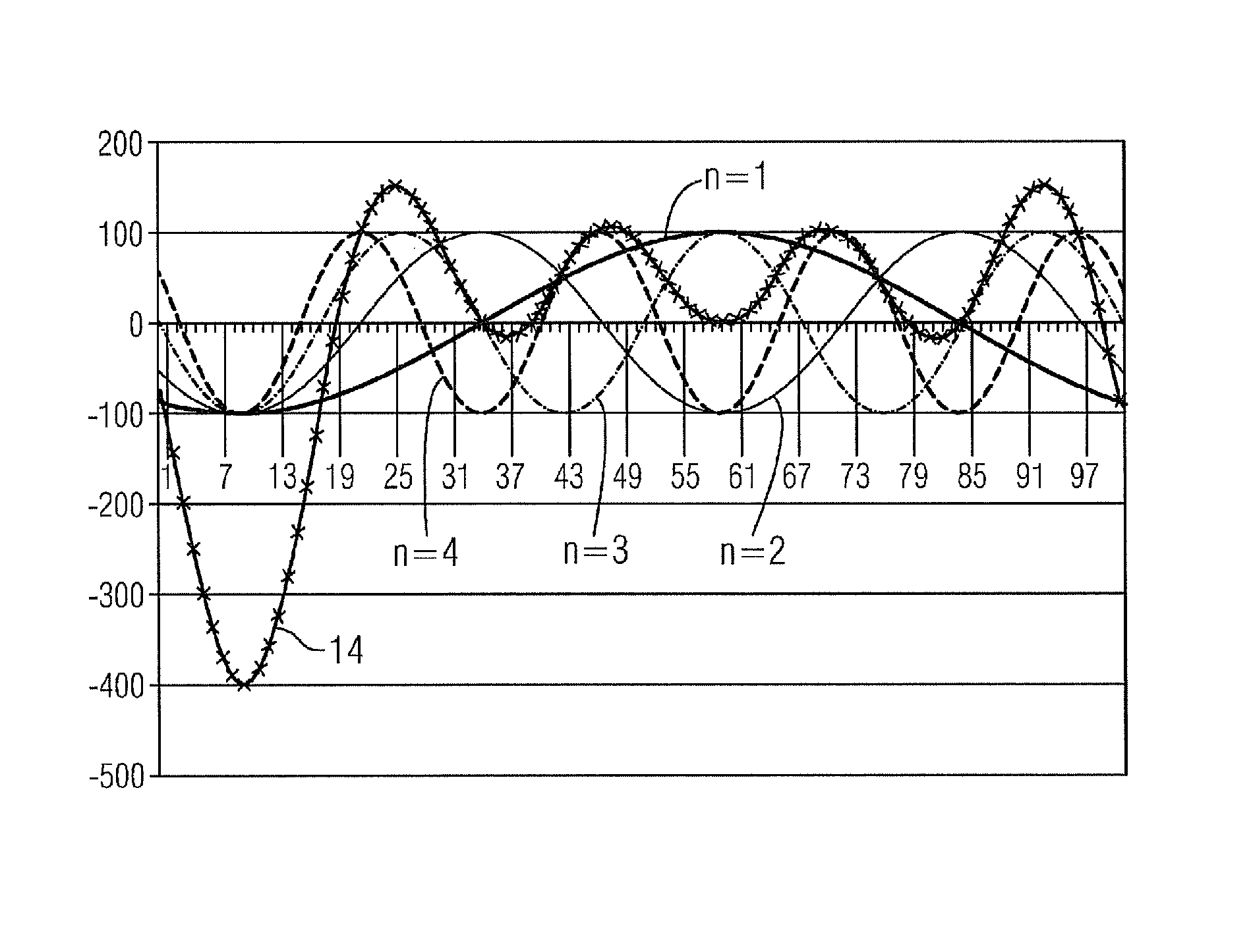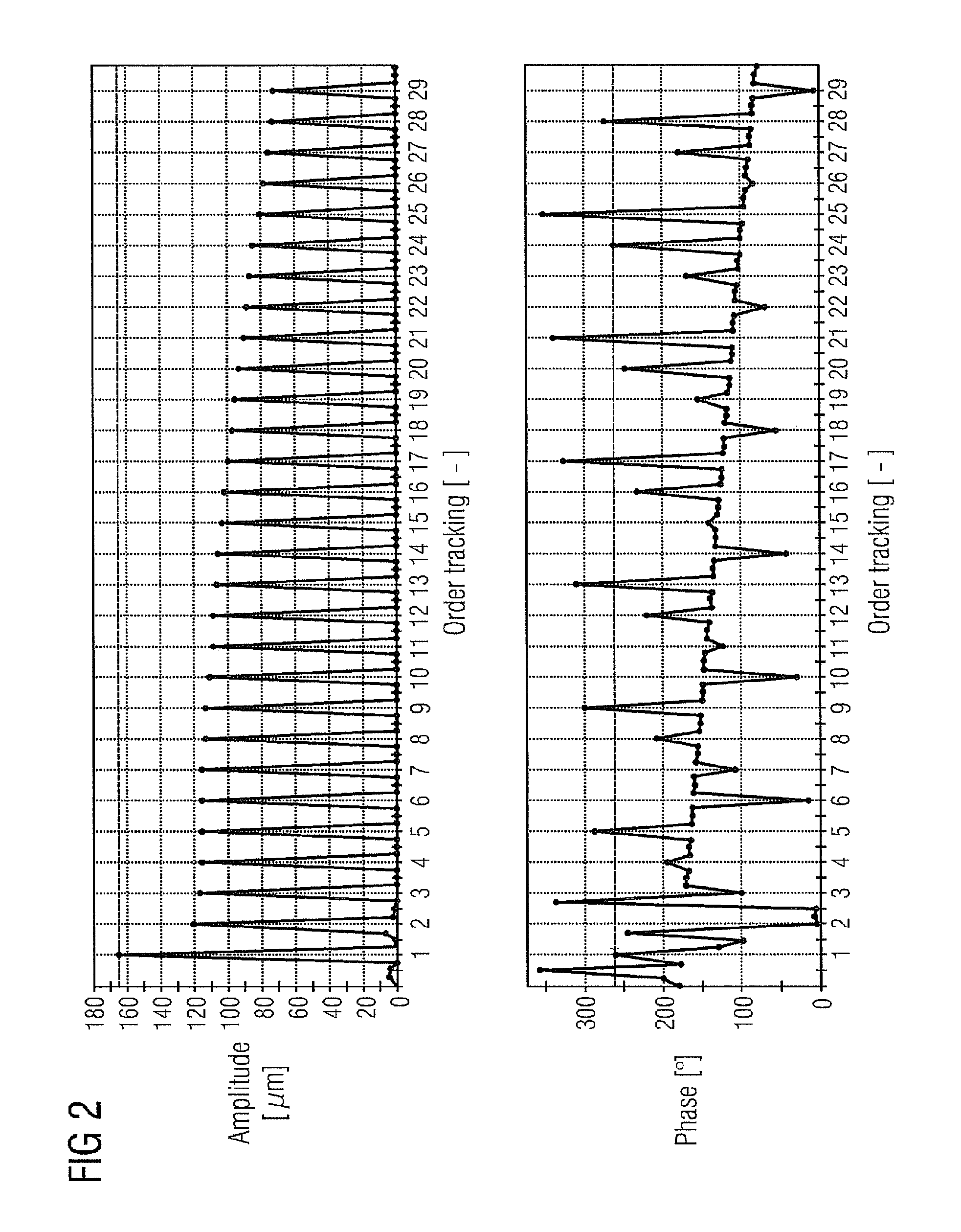Method for determining a twist angle
a twist angle and angle technology, applied in the direction of instruments, digital computer details, fluid couplings, etc., can solve the problems of high level of inaccuracy of calculation and imprecise measurement signal accuracy, and achieve the effect of minimizing inaccuracy
- Summary
- Abstract
- Description
- Claims
- Application Information
AI Technical Summary
Benefits of technology
Problems solved by technology
Method used
Image
Examples
Embodiment Construction
[0026]On the left FIG. 1 shows an exploded diagram of a shaft arrangement, as is commonly found in a gas and steam turbine installation for example. The gas turbine is connected to a steam turbine by way of a shaft 1. The shaft 1 consists of two subshafts, which are connected to one another by way of a releasable clutch 2. The first subshaft 3 is connected to the gas turbine and has a first notch 4, which marks the 0° position of the first subshaft. The second subshaft 5 is connected to the steam turbine and has a second notch 6, which marks the 0° position of the second subshaft 5. A first sensor 7 is disposed on the first subshaft 3 to capture a first measurement signal 8. A second sensor 9 is disposed on the second subshaft 5 to capture a second measurement signal 10.
[0027]The projection view 11 shows a slightly offset top view of the two subshafts. It can be seen that the 0° positions of the two subshafts are twisted through an angle α in relation to one another.
[0028]The measur...
PUM
 Login to view more
Login to view more Abstract
Description
Claims
Application Information
 Login to view more
Login to view more - R&D Engineer
- R&D Manager
- IP Professional
- Industry Leading Data Capabilities
- Powerful AI technology
- Patent DNA Extraction
Browse by: Latest US Patents, China's latest patents, Technical Efficacy Thesaurus, Application Domain, Technology Topic.
© 2024 PatSnap. All rights reserved.Legal|Privacy policy|Modern Slavery Act Transparency Statement|Sitemap



